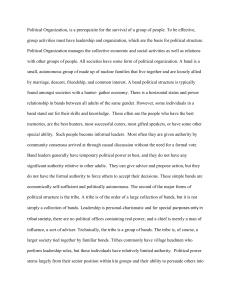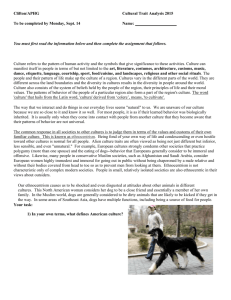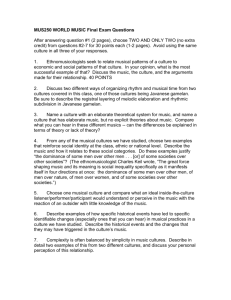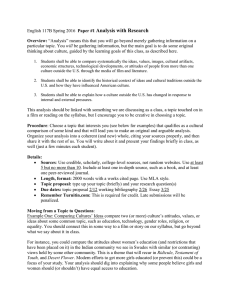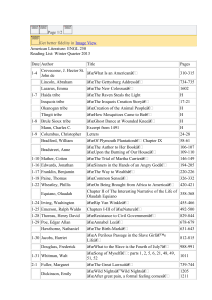FinalExamLongEssay
advertisement
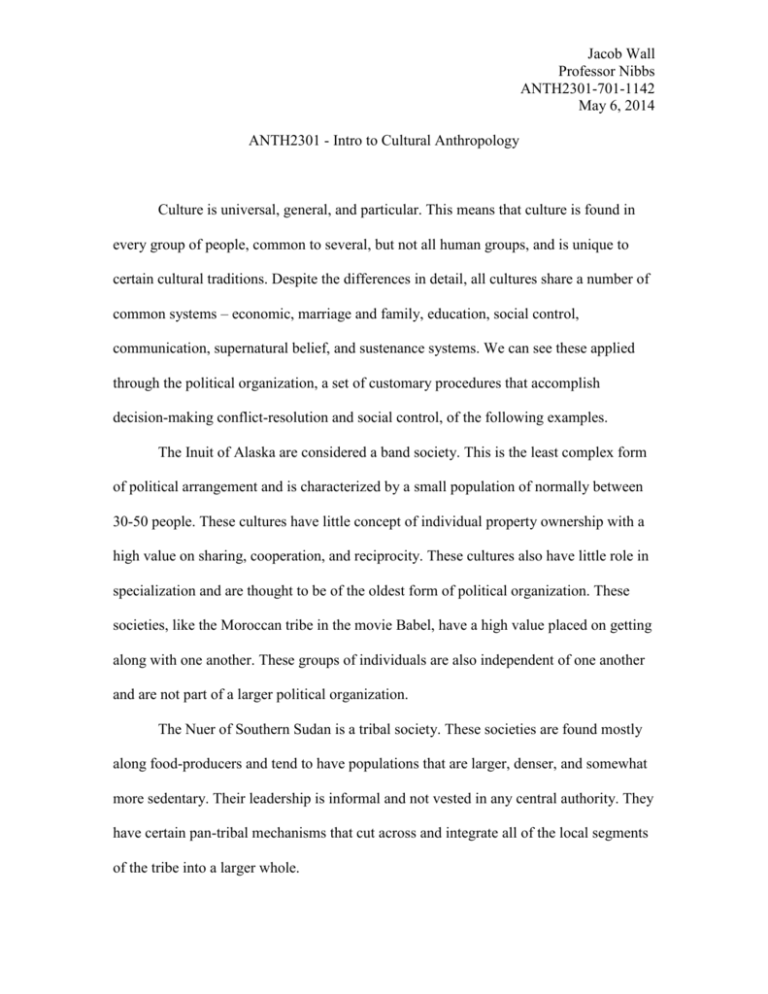
Jacob Wall Professor Nibbs ANTH2301-701-1142 May 6, 2014 ANTH2301 - Intro to Cultural Anthropology Culture is universal, general, and particular. This means that culture is found in every group of people, common to several, but not all human groups, and is unique to certain cultural traditions. Despite the differences in detail, all cultures share a number of common systems – economic, marriage and family, education, social control, communication, supernatural belief, and sustenance systems. We can see these applied through the political organization, a set of customary procedures that accomplish decision-making conflict-resolution and social control, of the following examples. The Inuit of Alaska are considered a band society. This is the least complex form of political arrangement and is characterized by a small population of normally between 30-50 people. These cultures have little concept of individual property ownership with a high value on sharing, cooperation, and reciprocity. These cultures also have little role in specialization and are thought to be of the oldest form of political organization. These societies, like the Moroccan tribe in the movie Babel, have a high value placed on getting along with one another. These groups of individuals are also independent of one another and are not part of a larger political organization. The Nuer of Southern Sudan is a tribal society. These societies are found mostly along food-producers and tend to have populations that are larger, denser, and somewhat more sedentary. Their leadership is informal and not vested in any central authority. They have certain pan-tribal mechanisms that cut across and integrate all of the local segments of the tribe into a larger whole. Jacob Wall Professor Nibbs ANTH2301-701-1142 May 6, 2014 Chiefdoms have a political authority that is likely to reside with a single individual, acting alone or in conjunction with an advising council. They integrate a number of local communities in a formal and permanent way. They do not vote on who the leader is but rather it gets passed down linearly. These societies are made up of local communities that differ from one another in terms of rank and status. Chiefships are hereditary and the chief and immediate kin are the social and political elite. We can see this in the film, Onka’s Big Moka, even if the film was mostly focused on demonstrating potlatches. You can see that there is a more formalized structure in their society. This is also true of the neighboring society which gets upset that Onka’s tribe due to them believing they killed one of their own. Although an abstract example to use, in the film they showed the form of leadership that mirrors Chiefdoms.

